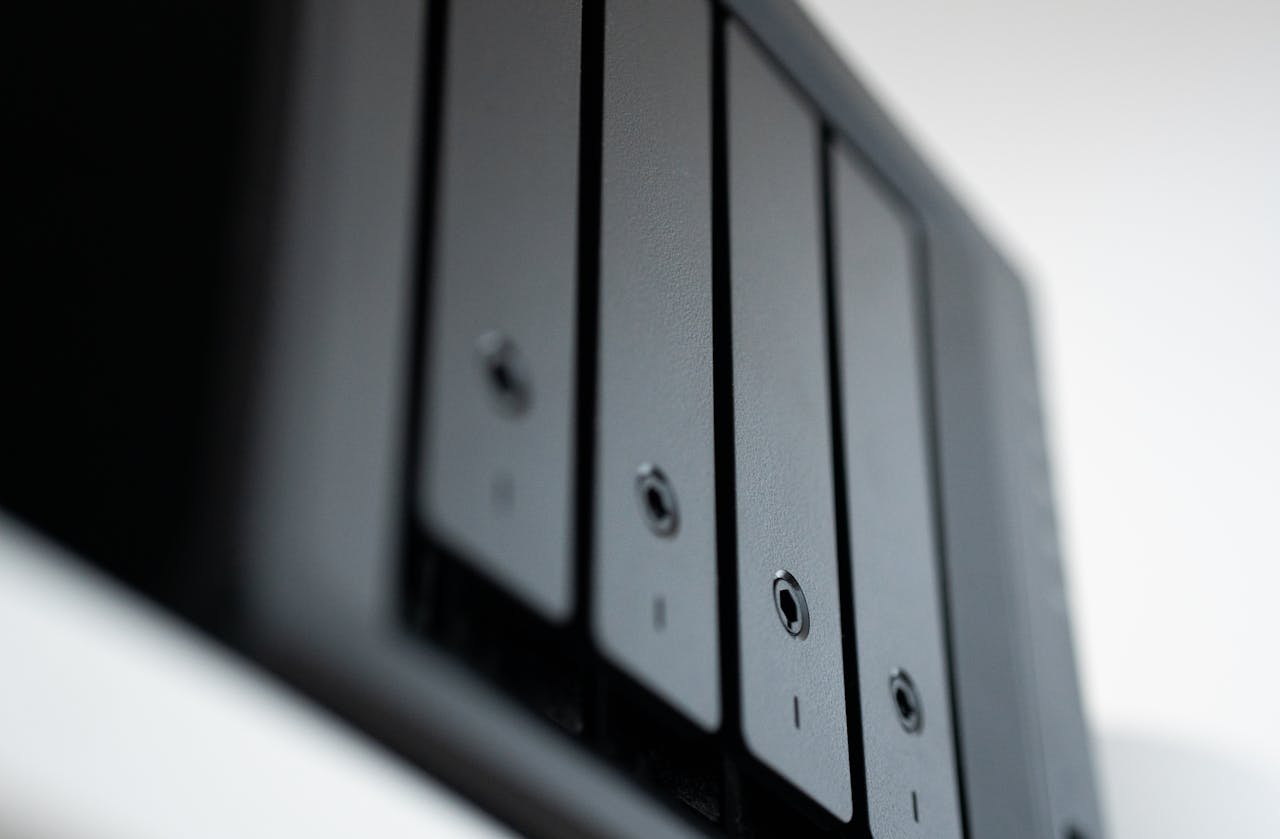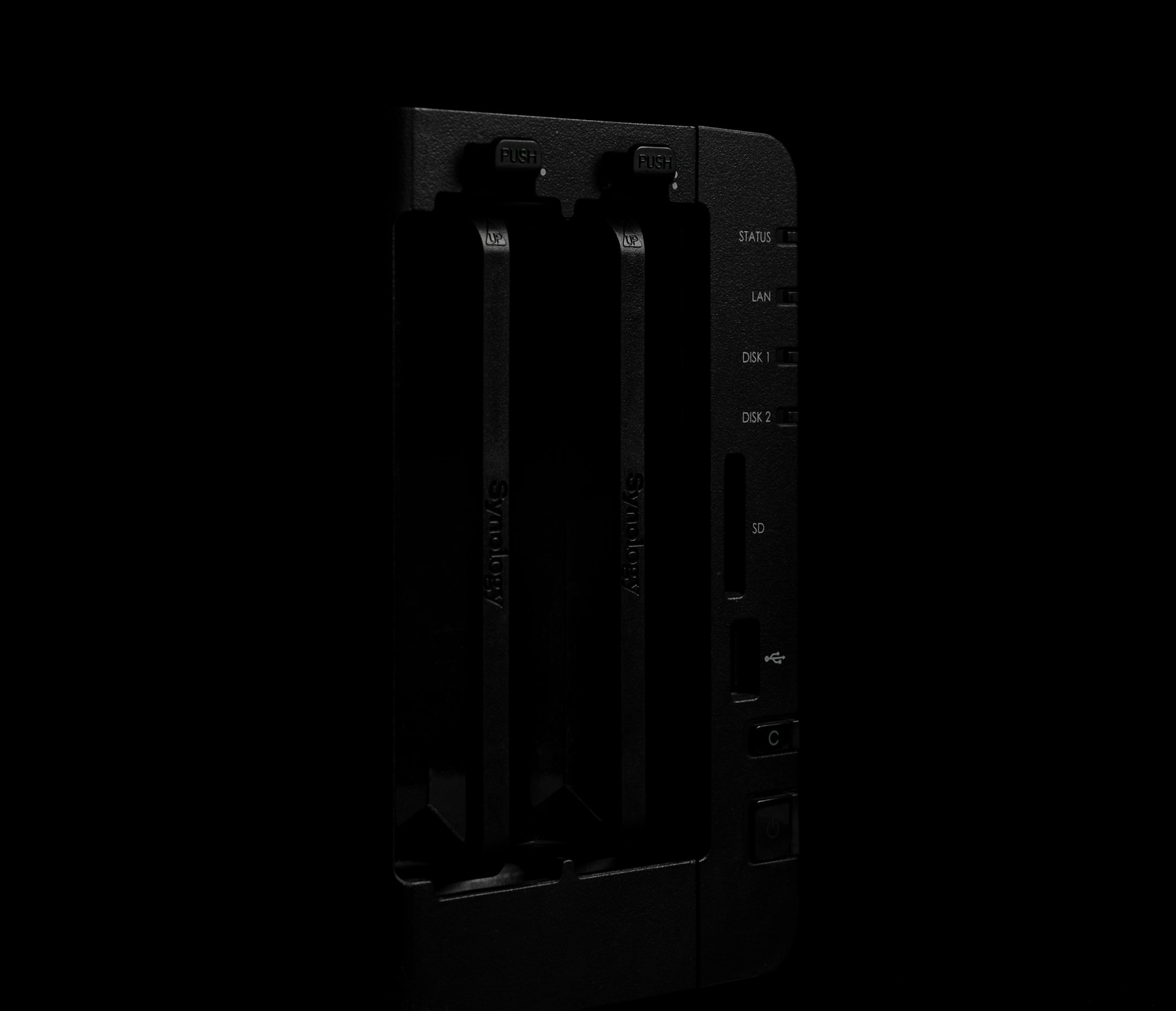Cost Comparison – Upfront vs. Long-Term Expenses
NAS: Higher Initial Cost, But Saves Over Time
Example Setup:
- Device: Synology DS224+ (2-bay budget-friendly NAS, 2GB DDR4 RAM) = $300
- Drives: 2x Seagate IronWolf 2TB NAS HDDs (RAID 1 for redundancy) = $80 x 2 = $160
- Total Upfront Cost: $460
*All prices are estimates and may change by the time you read this.
| Expense | NAS | Google Drive | External HDD |
|---|---|---|---|
| Upfront Hardware | $460 | $0 | $60 (1x2TB) |
| Monthly Fees | $3 (electricity)* | $10 (2TB plan) | $0 |
| Drive Replacements** | $80 (Year 4) | $0 | $60 (1x swap) |
| Total (5 Years) | $640 | $600 | $120 |
Notes:
- Electricity: NAS uses ~30W ($0.15/kWh) - 3/month (Source).
- Drive Lifespan: NAS HDDs last 5–7 years (replace one at Year 4 for safety).
- Cloud: Assumes no Google Drive price hikes (unlikely; e.g., 2023’s 25% increase).
→ Key Insight:
- NAS costs $40 more than cloud over 5 years but offers 10x more control and no privacy risks.
- External drives seem cheapest but lack redundancy (lose the drive = lose all data).
Cloud Storage: Low Entry, Recurring Fees
Google Drive 2TB Plan:
- Monthly:
$10/month - $600 over 5 years**. - Hidden Costs:
- Need $20/month if you exceed 2TB (common for photos/videos).
- Internet dependency: Slow uploads (e.g., 100GB = ~1 day on 10Mbps upload).
With iCloud+/Dropbox Comparison:
| Provider | 2TB Monthly | 5-Year Cost |
|---|---|---|
| Google Drive | $10 | $600 |
| iCloud+ | $10 | $600 |
| Dropbox | $12 | $720 |
→ Reality Check: Cloud seems cheap until you need more storage—then costs spike 2–3x.
External Drives: Cheap but Limited
Example: WD My Passport 2TB Portable HDD = $60
- Pros:
- No subscriptions.
- Portable (works offline).
- Cons:
- No redundancy: Lose/damage the drive = data gone.
- Manual backups: Forget to copy files? No recovery.
5-Year Cost for Reliable Backups:
- Buy two drives (one backup) = $120.
- Replace every 3 years (HDDs fail) → Total:
180–180–240.
→ Verdict: External drives work well for temporary storage or cold backups, but they’re not ideal for continuous, scalable access like NAS or cloud options.
| Solution | Total Cost (5Y) | Cost per TB |
|---|---|---|
| NAS | $640 | $320/TB |
| Google Drive | $600 | $300/TB |
| External HDD | $180-$240 | $90-$120/TB |
→ NAS vs. Cloud: For ~$0.33/month more, NAS gives you:
- Full ownership.
- No vendor lock-in.
- RAID redundancy.
Security & Control – Who Owns Your Data?
NAS: Full Privacy & Customization
Network Attached Storage (NAS) devices give you complete control over your data. Since the drives live in your home or office, your files stay local—no third-party server involvement. You can set up advanced encryption, user-level permissions, and even firewall rules to keep everything locked down.
However, with great control comes great responsibility. You’re in charge of your own data protection strategy. While NAS systems often use RAID for redundancy, RAID alone isn’t a backup—it just helps with drive failure. To truly protect your data, you’ll still need an offsite or cloud backup.
| Factor | NAS Summary |
|---|---|
| Privacy | Excellent - Data stays local |
| Control | Full control over settings and access |
| Vulnerabilities | Misconfigured access; local failures |
| Backup | Manual setup required (RAID is NOT backup) |
Cloud Storage: Convenient but Risky
Cloud storage services like Google Drive, Dropbox, and iCloud prioritize convenience. Your files are instantly available across all your devices, and many platforms include versioning and file recovery for accidental deletions or edits. For example, Google Drive lets you recover previous versions within 30 days.
But this convenience comes with potential downsides. Centralized cloud systems are frequent targets for cyberattacks. High-profile breaches like the 2023 MOVEit hack have exposed sensitive data from millions of users. Also, most cloud providers have clauses that allow them to scan your files for “policy violations,” creating privacy concerns for sensitive data.
| Factor | Cloud storage summary |
|---|---|
| Privacy | Moderate - Provider can access/scan files |
| Control | Limited - Tied to provider's terms/policies |
| Vulnerabilities | High-profile breach risk |
| Backup | Automatic, but depends on provider's policy |
External Drives: Simple but Fragile
External drives are the most straightforward solution—just plug them in and copy your files. With no internet requirement, they’re great for keeping sensitive data offline and away from online threats. This makes them ideal for cold storage or simple backup tasks.
However, the simplicity comes at a cost. External drives are easy to lose or damage, and if they’re not encrypted or backed up, lost data is usually gone for good. Plus, there’s no remote access, so they’re impractical for users who need file access from multiple locations.
| Factor | External drive security summary |
|---|---|
| Privacy | Excellent (offline by default) |
| Control | Full control, but limited features |
| Vulnerabilities | Physical loss/damage = permanent loss |
| Backup | Manual; easily forgotten |
Performance & Accessibility
NAS: Fast Local Speeds, Remote Access Possible
NAS devices shine when it comes to local performance—especially if you’re connected via Gigabit Ethernet or faster (e.g., 2.5GbE or 10GbE). This makes them perfect for tasks like editing 4K video directly from the NAS or streaming high-resolution media across your home network without lag. File transfers are quick and consistent, without the unpredictability of internet-based services.
Remote access is also possible, though it requires setup. Many NAS brands offer built-in solutions like Synology’s QuickConnect or you can configure a VPN for secure remote access. Once set up, you get the convenience of cloud-like access without giving up control over your data.
Cloud: Speed Depends on Internet
Cloud performance is entirely dependent on your internet connection. While download speeds are usually fast, upload speeds are often limited—especially with residential ISPs. Uploading large files (like a 100GB backup) can take hours or even days on slower connections.
Access is universal though—whether you’re on your laptop in a coffee shop or your phone halfway around the world, your files are available as long as you have internet. However, bandwidth caps, latency, and throttling from your ISP or the cloud provider can sometimes affect large transfers.
External Drives: No Network, No Sharing
External drives typically offer high-speed file transfers thanks to USB 3.0 or newer (e.g., USB 3.2, Thunderbolt). This makes them ideal for quick local backups, storing large files, or moving data between machines.
But their convenience ends at the cable. Only one computer can use an external drive at a time, and there’s no native way to access the data remotely unless you manually plug it into a network device. So while fast, they’re not built for shared or always-available access.
| Feature / Storage Type | NAS | Cloud Storage | External Drives |
|---|---|---|---|
| Local Speed | Fast (1Gbps+, expandable with faster NICs) | N/A - depends on internet | Very fast (USB 3.0, Thunderbolt) |
| Remote Access | Yes - via VPN, DDNS, or vendor service | Yes - built-in across devices | No - must be physically connected |
| Multi-Device Access | Yes - simultaneous access for multiple users | Yes - syncs across all signed-in devices | No - single device at a time |
| File Sharing | Seamless over LAN/WAN | Easy via links and collaboration tools | Manual (copy and send files physically) |
| Scalability | High - add drives or upgrade NAS | Instant - scale with plan tiers | Low - limited to drive capacity |
| Setup Complexity | Medium - requires network configuration | Low - plug-and-play | Very low - plug and use |
Summary: Which should you choose?
Choosing the right storage solution depends entirely on your needs, budget, and technical comfort. If you’re dealing with large media libraries, care deeply about data privacy, or want full control over your storage environment, a NAS is a powerful long-term investment. It offers speed, security, and scalability—but requires some hands-on setup and maintenance. Avoid it if you’re looking for something you can simply plug in and forget.
For users who prioritize convenience and collaboration—especially with smaller files—cloud storage shines. It’s ideal for documents, photos, and team projects that need to stay in sync across devices. However, cloud platforms come with ongoing subscription costs, potential privacy concerns, and slower performance when uploading large data sets. It’s best to avoid cloud storage as your only solution for sensitive or irreplaceable data.
External drives are excellent for quick local backups, offline storage, and moving files between computers. They’re fast and simple, but not built for multi-user access, automation, or remote access. Relying solely on them can be risky without proper encryption or a second layer of backup.
Hybrid Approach
For many users, the best strategy is a combination. Use a NAS for primary storage, cloud for offsite backups of your most critical data, and external drives for cold storage or emergency recovery. This layered setup balances convenience, performance, and peace of mind.
| Solution | Best for | Avoid if |
|---|---|---|
| NAS | Large libraries, privacy, long-term savings | You want "set and forget." |
| Cloud Storage | Small files, collaboration | Storing sensitive data. |
| External Drives | Quick backups, portability | Need multi-user access. |



